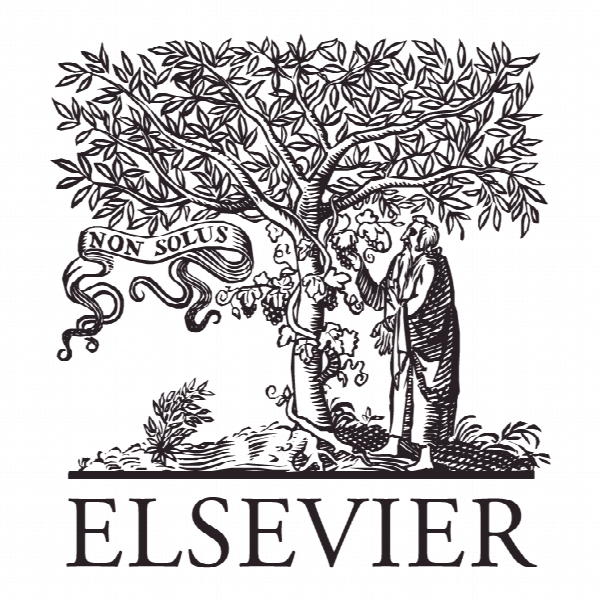تاثیر هنر درمانی در خلق و خو و کاهش درد و اضطراب پیشنهادی برای بیماران بستری شده در طول درمان حاد بیمارستان Art therapy improves mood, and reduces pain and anxiety when offered at bedside during acute hospital treatmen
- نوع فایل : کتاب
- زبان : انگلیسی
- ناشر : Elsevier
- چاپ و سال / کشور: 2018
توضیحات
رشته های مرتبط پزشکی، روانشناسی
گرایش های مرتبط خون و آنکولوژی، گوارش و کبد
مجله هنرها در روان درمانی – The Arts in Psychotherapy
دانشگاه Art Therapy Department – Arts and Medicine Institute – United States
منتشر شده در نشریه الزویر
کلمات کلیدی انگلیسی Art therapy and mood, anxiety, and pain, Adult medical inpatients, Medical art therapy, Cancer, Gastrointestinal
گرایش های مرتبط خون و آنکولوژی، گوارش و کبد
مجله هنرها در روان درمانی – The Arts in Psychotherapy
دانشگاه Art Therapy Department – Arts and Medicine Institute – United States
منتشر شده در نشریه الزویر
کلمات کلیدی انگلیسی Art therapy and mood, anxiety, and pain, Adult medical inpatients, Medical art therapy, Cancer, Gastrointestinal
Description
Introduction Hospitalization can be a stressful and anxiety producing experience. Whether hospitalized for trauma, sudden illness, planned surgical intervention, or as a readmission for a chronic condition, a patient may experience a myriad of emotions, including but not limited to fear, worry, confusion, and mood disruption (Bar-Sela, Atid, Danos, Gabay, & Epelbaum, 2007; Tully et al., 2011). Comorbid issues of depression and anxiety are a common experience for medically ill hospitalized patients (Gaus, Kiep, Holtkamp, Burkert, & Kendel, 2015; Glinzak, 2016; Maujean, Pepping, & Kendall, 2014; Pederson, Majumdar, Forhan, Johnson, & McAlister, 2016; Sokoreli et al., 2016). Feelings of stress can exacerbate and be exacerbated by issues of pain as well (Angheluta & Lee, 2011). Although the management of pain is a priority, it can be a difficult task that is further complicated by the highly subjective nature of pain. Poorly managed pain not only increases physical stress and compromises healing, but can lead to loss of hope, feelings of helplessness, and a lessening sense of control and personal efficacy (Eytan & Elkis-Abuhoff, 2013). Pederson et al. (2016) noted that poorly managed or unacknowledged symptoms of depression and anxiety may negatively impact 30 day readmission rates. Additionally, hospital length of stay is often increased when psychosocial needs are not met (Carter et al., 2016). Perhaps most importantly, unmanaged psychosocial stress levels can negatively impact prognosis and survival rates, especially amongst those with a diagnosis of cancer or cardiac disease (Bar-Sela et al., 2007; Ramos, Prata, Bettencourt, Gonc¸ alves, & Coelho, 2016; Sokoreli et al., 2016; Tully et al., 2011). This is unfortunate and very likely unnecessary, since studies have demonstrated that experiences of anxiety and depression can be predicted for most patients, and therefore could be addressed during hospitalization (Basak et al., 2015). Art therapy (AT) has been shown to help unaddressed psychosocial distress in hospitalized patients and to promote better management of physical symptoms, overall well-being, and socialization (Angheluta & Lee, 2011; Kapitan, 2012). As a psychotherapeutic approach, art therapists can assess and engage patients in the creation of art to encourage emotional and physical healing. Through the creation of art, patients can visually express unconscious emotions which can often be explored through metaphor (Angheluta & Lee, 2011). This approach may also feel less invasive to patients who may not perceive themselves as having psychological issues, yet are in need of supportive care. Furthermore, there is evidence that AT can help reduce distress in people with cancer (Glinzak, 2016; Jang, Kang, Lee, & Lee, 2016; Wood, Low, Molassiotis, & Tookman, 2013); HIV/AIDS (Feldman, Betts, & Blausey, 2014); neurologically based trauma (Hass-Cohen, Clyde Findlay, Carr, & Vanderlan, 2014); and epilepsy (Stafstrom, Havlena, & Krezinski, 2012). This reduction of distress may in turn help to reduce related symptoms of anxiety (Ali, Gammidge, & Waller, 2014; Barel-Shoshani & Kreitler, 2017; Safrai, 2013). Anxiety is not unexpected in acutely ill persons, as it is exacerbated by feelings of insecurity, fear of the unknown, and physiological reactions such as increase adrenaline and cortisol which often accompany a hospital stay. Art therapy can assist in reducing anxiety through not only the mindful and soothing use of art materials, but through the feelings of attachment and comfort created by the triangular relationship between the art, the art process, and the art therapist (Czamanski-Cohen & Weihs, 2016). In a 2014 study of stroke survivors (n = 6), Khalid et al. found that stroke patients who attended an art therapy group at for at least five sessions had a reduction in anxiety level from borderline normal (8–10) to normal (0–7) range as measured by the Hospital Anxiety and Depression scale. Similarly, a significant decrease in anxiety levels were found via the Geriatric Anxiety Inventory, in a group identified as “anxious adults” (n = 44) who participated in a four week art therapy program that compared two art therapy approaches (Ezell, 2017). More research is needed on the links between anxiety, inpatient hospitalization, and the efficacy of art therapy as a treatment approach.


